PROCESS - FINISHING PROCESS
What is FINISHING PROCESS
At Anindo Furniture, our finishing process is the final artistry that brings raw wood components to life
It’s where durability meets elegance, ensuring every piece not only looks stunning but also stands the test of time
We follow a meticulous 6-Stage Finishing Process to achieve a flawless, protective surface: Raw Sand → Base Color → Fine Sand → Stain → Top Coat → QC Scrutiny
This semi-mechanized approach combines precision tools with skilled craftsmanship for consistent, high-quality results
Why do we have a 6-step finishing process?
The finishing process is essential to achieve a surface that is not only attractive but also long-lasting
At each stage, specific measurements and parameters are followed to ensure the final product meets rigorous quality criteria. For example:
- Durability: Proper finishing protects the wood from wear and tear, stains, and environmental factors.
- Appearance: A flawless finish enhances the natural beauty of the wood and gives your furniture a premium look.
- Performance: The process ensures the furniture is functional and safe for everyday use.
How Does FINISHING OPERATION Work?
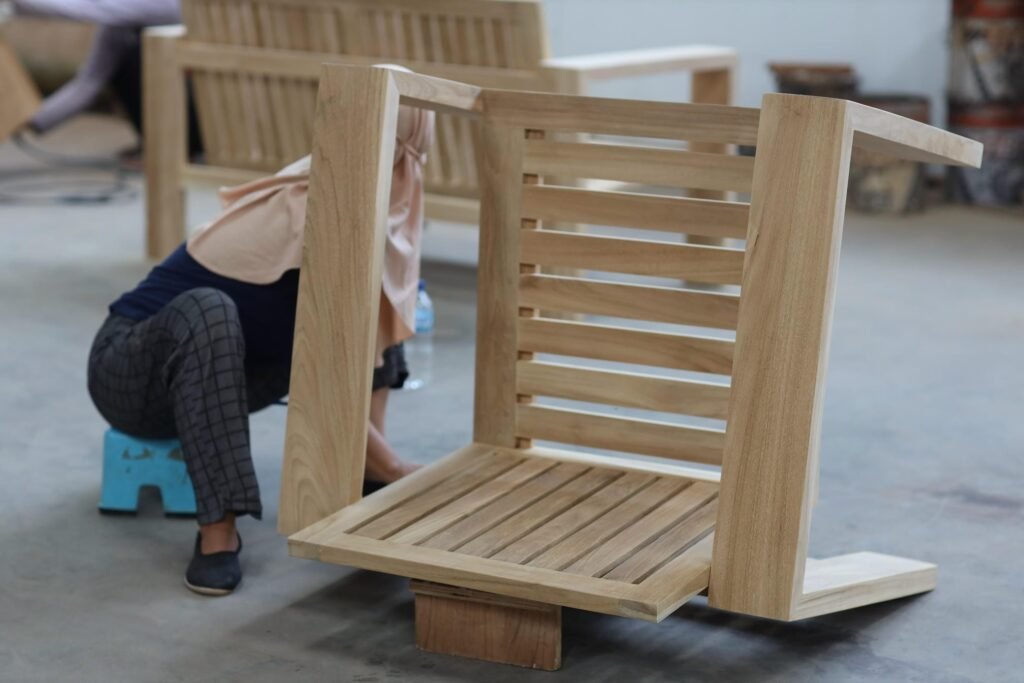
Step 1: Raw Sanding
What: Raw sanding is the initial step of removing imperfections and creating a smooth surface
Why: To prepare the wood for the next stages of finishing and ensure a uniform base
How: Using specialized sanding machines with controlled grit levels
Outcome: A smooth, consistent surface ready for staining and coating
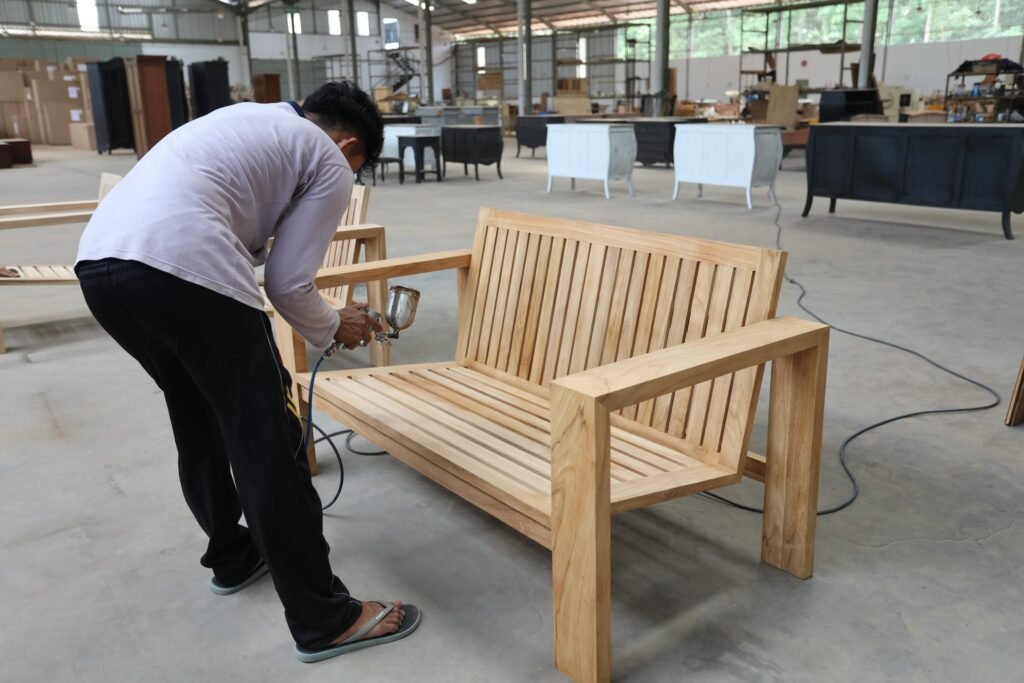
Step 2: Base Color
What: Base color is applied to the surface of the wood
Why: To provide a uniform foundation for the final finish and enhance the wood’s natural tone
How: Applying a primer or base coat with professional-grade tools
Outcome: A clean, even base for the final color and protective layers
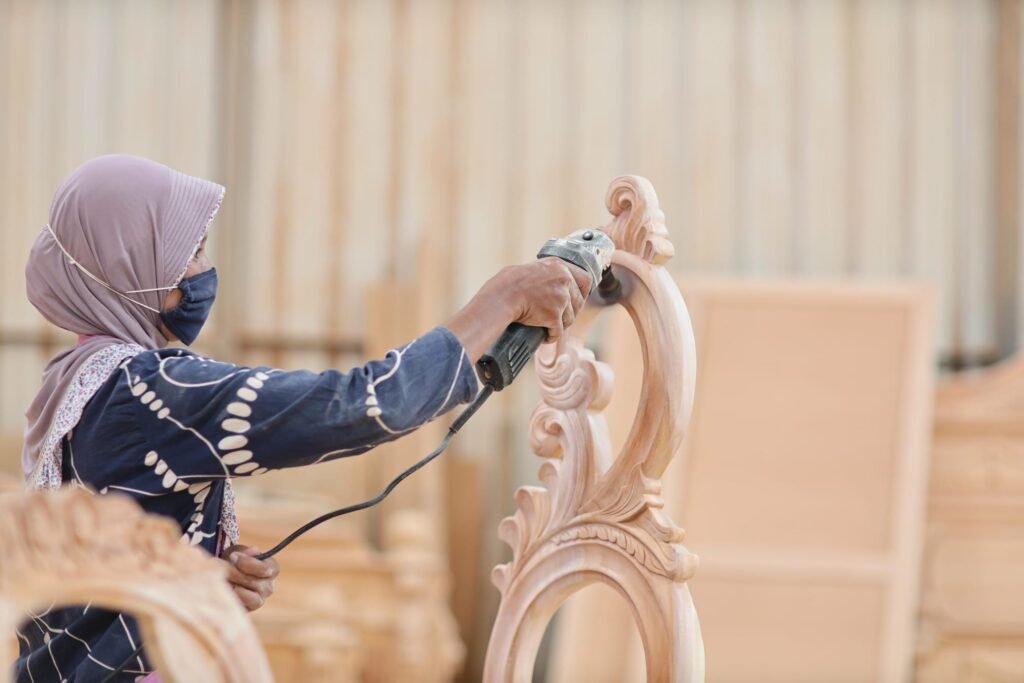
Step 3: Fine Sanding
What: Fine sanding is performed to perfect the surface texture
Why: To eliminate any remaining roughness and ensure a flawless finish
How: Using precise sanding techniques with finer grits
Outcome: A smooth, refined surface ready for staining and top coating
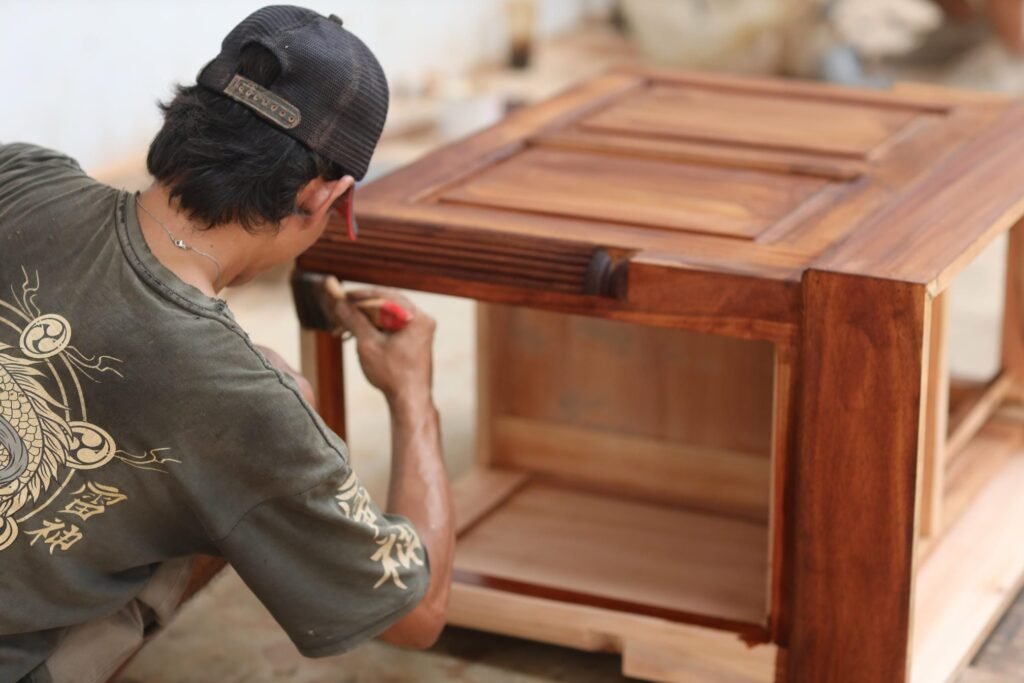
Step 4: Stain
What: Stain is applied to enhance the wood’s natural grain and color
Why: To achieve the desired color depth and accentuate the grain pattern
How: To achieve the desired color depth and accentuate the grain pattern
Outcome: A rich, consistent color that highlights the wood’s natural texture.
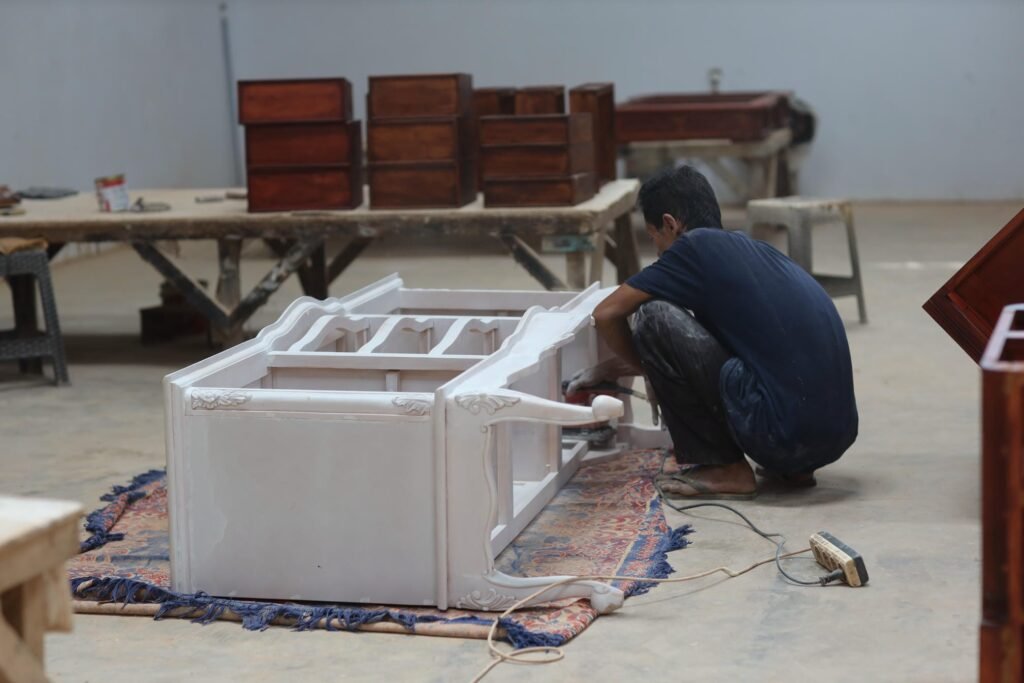
Step 5: Main Finishing
What: Applying a bespoke, final layer of finish (e.g., color, texture, or effect) tailored to the functional requirements
Why: To achieve the exact look, feel, or durability requested by the customer
How: Using specialized techniques like spray application, hand brushing to achieve uniform color, gloss, or texture
Outcome: Furniture is customized to match the client’s vision, ready for the protective top coat
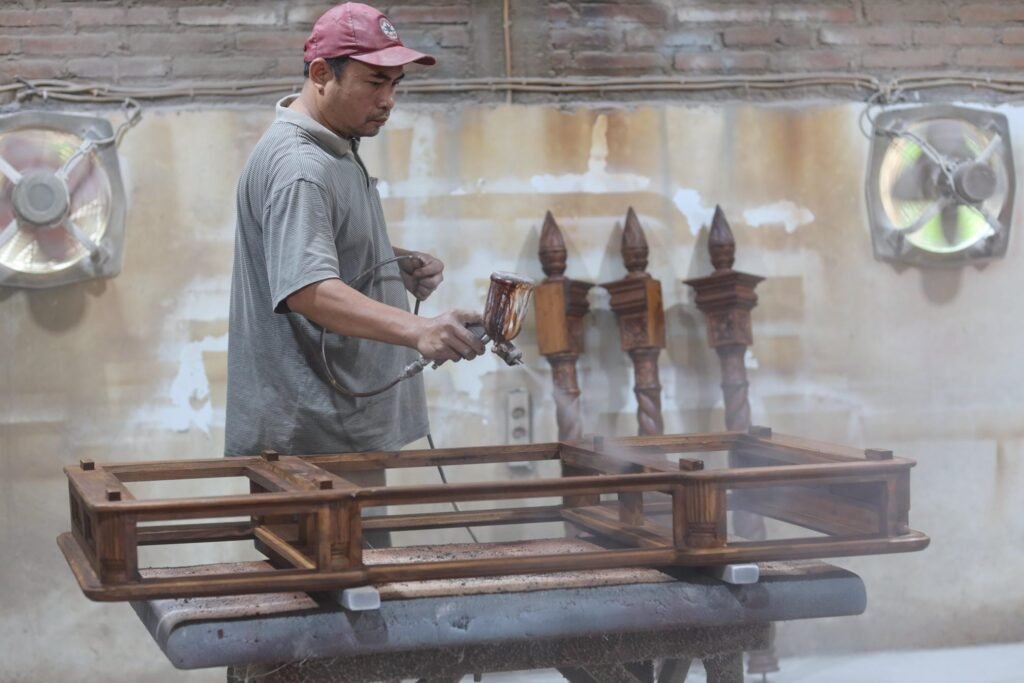
Step 6: Top Coat
What: A top coat is applied to protect the finished surface.
Why: To seal the finish, protect against wear, and add shine
How: Applying multiple layers with specialized spraying techniques
Outcome: A protected, long-lasting surface that maintains appearance over time
